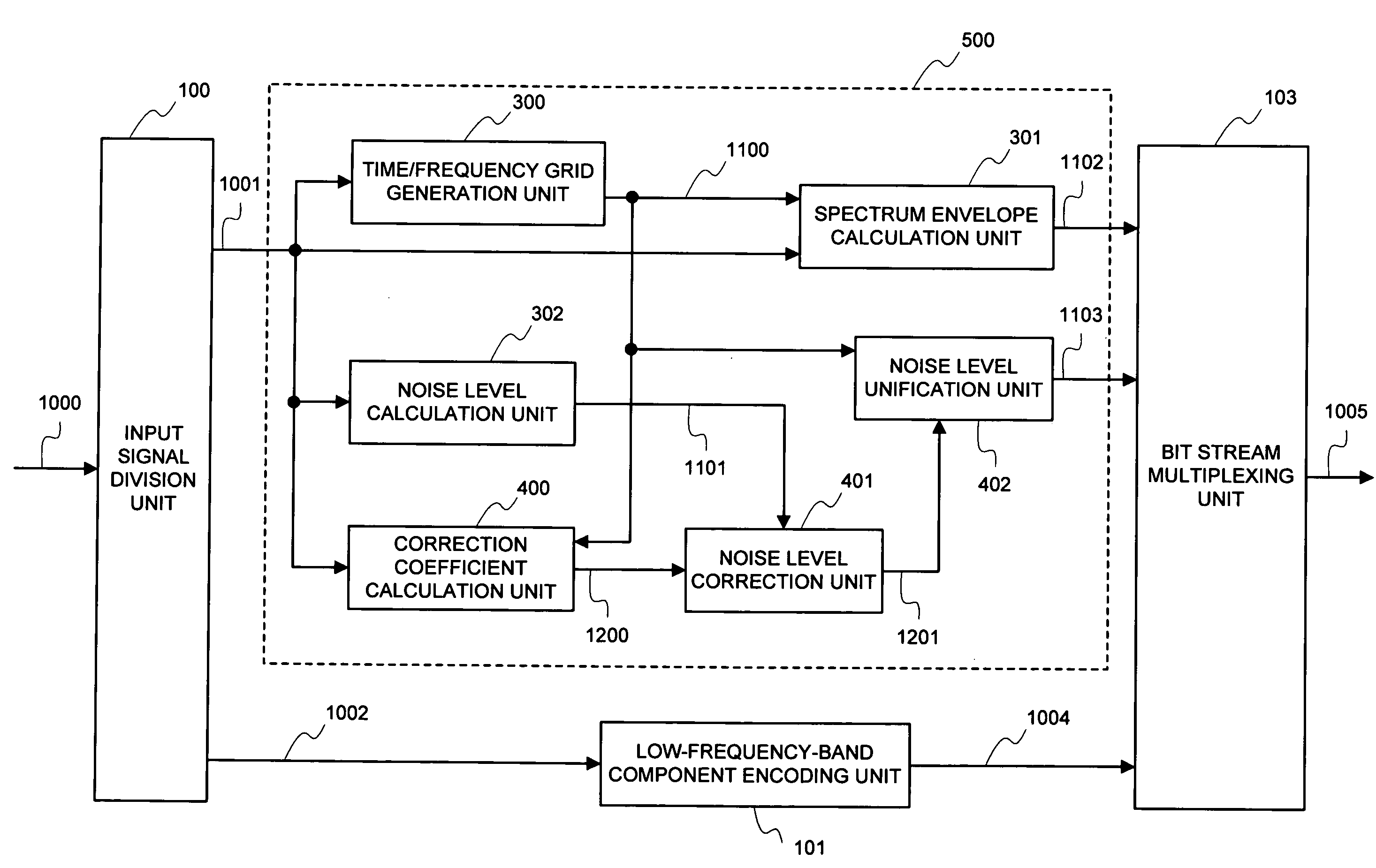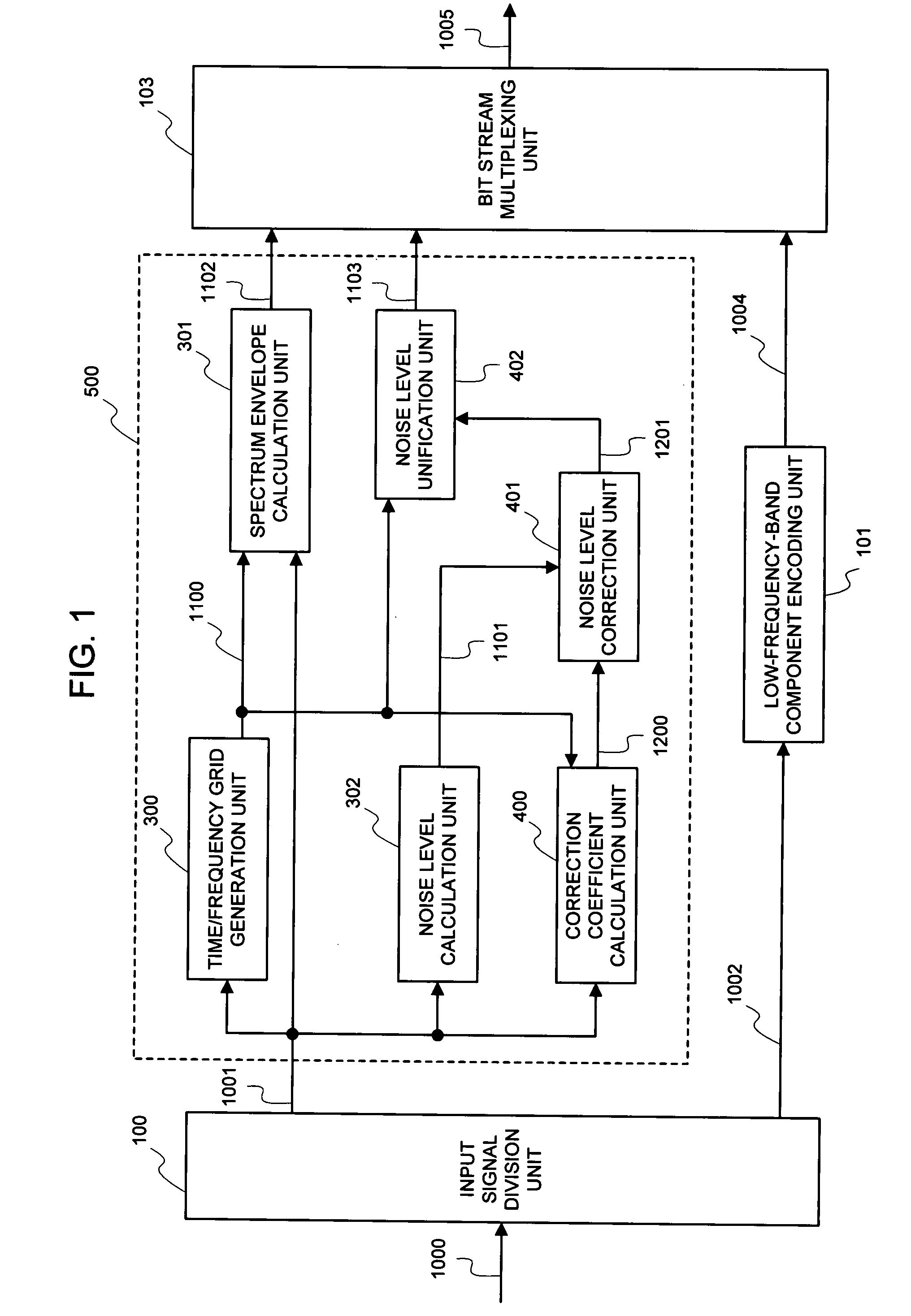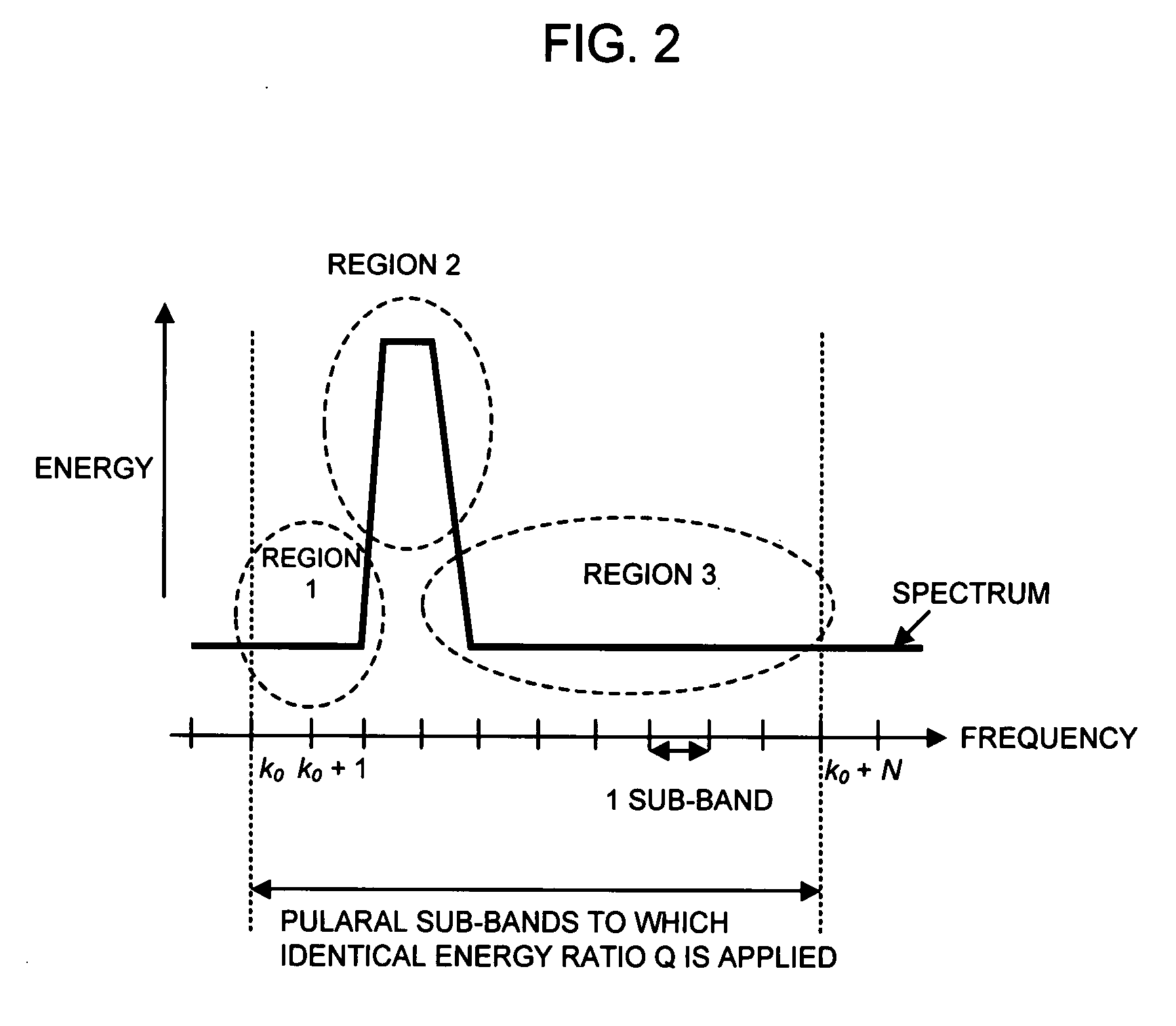Audio Encoding Device, Audio Encoding Method, and Audio Encoding Program
a technology of audio encoding and audio encoding methods, applied in the field of audio encoding devices, audio encoding methods, audio encoding programs, to achieve the effects of reducing the amount of operation needed, high quality, and correcting the noise level of each sub-band
- Summary
- Abstract
- Description
- Claims
- Application Information
AI Technical Summary
Benefits of technology
Problems solved by technology
Method used
Image
Examples
first embodiment
[0084]At first, a first embodiment will be explained.
[0085]Upon making a reference to FIG. 1, the audio encoding device of the first embodiment of the present invention is configured of an input signal division unit 100, a low-frequency-band component encoding unit 101, a time / frequency grid generation unit 300, a spectrum envelope calculation unit 301, a noise level calculation unit 302, a correction coefficient calculation unit 400, a noise level correction unit 401, a noise level unification unit 402, and a bit stream multiplexing unit 103. FIG. 1 and FIG. 6 differ from each other in a high-frequency-band component encoding unit 102 and a high-frequency-band component encoding unit 500. Upon further comparing these components in details by employing FIG. 1 and FIG. 7, the correction coefficient calculation unit 400 and the noise level correction unit 401 are added to the high-frequency-band component encoding unit 500, and the noise level unification unit 300 is replaced by the n...
second embodiment
[0103]Next, the present invention will be explained in details by employing FIG. 4.
[0104]Upon making a reference to FIG. 4, the best mode for carrying out the second invention of the present invention includes an input signal division unit 100, a low-frequency-band component encoding unit 101, a time / frequency grid generation unit 300, a spectrum envelope calculation unit 301, a noise level calculation unit 302, a correction coefficient calculation unit 403, a noise level correction unit 401, a noise level unification unit 402, and a bit stream multiplexing unit 103.
[0105]The second embodiment of the present invention differs in only that the correction coefficient calculation unit 400 is replaced with the correction coefficient calculation unit 403 as compared with the first embodiment of the present invention, and the other part thereof is entirely identical. Thereupon, the correction coefficient calculation unit 403 will be explained in details.
[0106]The correction coefficient ca...
third embodiment
[0109]Next, the present invention will be explained in details by making a reference to the accompanied drawings.
[0110]Upon making a reference to FIG. 5, in the case of having configured the foregoing first and second embodiments of the present invention with a program 601, the third embodiment of the present invention is equivalent to a configuration of a computer 600 that operates under its program 601.
[0111]The program 601, which is loaded into the computer 600 (central processing unit; a processor; a data processing unit), controls an operation of the computer 600 (central processing unit; a processor; a data processing unit). The computer 600 (central processing unit; a processor; a data processing unit) executes the process identical to the process explained in the foregoing first and second inventions of the present invention under a control of the program 601, and outputs the bit stream 1005 from the input signal 1000.
PUM
 Login to View More
Login to View More Abstract
Description
Claims
Application Information
 Login to View More
Login to View More - R&D
- Intellectual Property
- Life Sciences
- Materials
- Tech Scout
- Unparalleled Data Quality
- Higher Quality Content
- 60% Fewer Hallucinations
Browse by: Latest US Patents, China's latest patents, Technical Efficacy Thesaurus, Application Domain, Technology Topic, Popular Technical Reports.
© 2025 PatSnap. All rights reserved.Legal|Privacy policy|Modern Slavery Act Transparency Statement|Sitemap|About US| Contact US: help@patsnap.com



